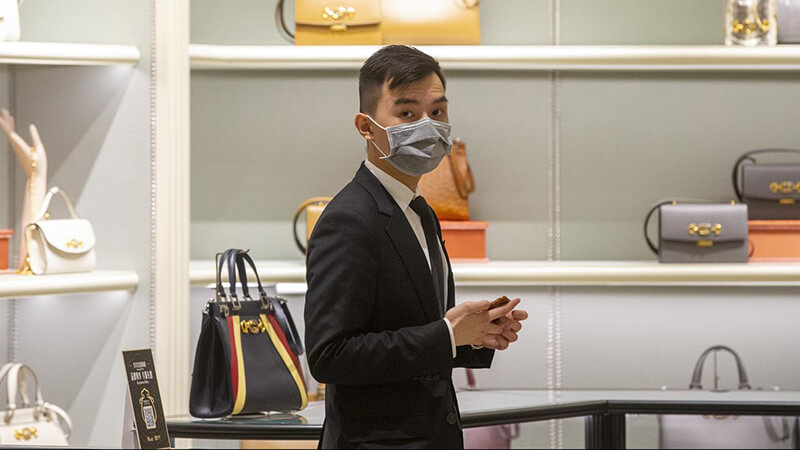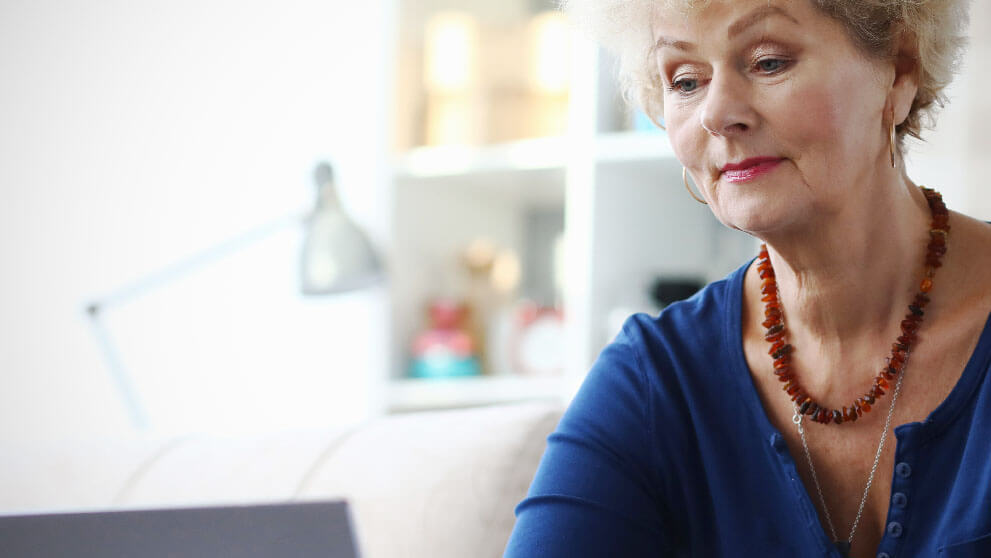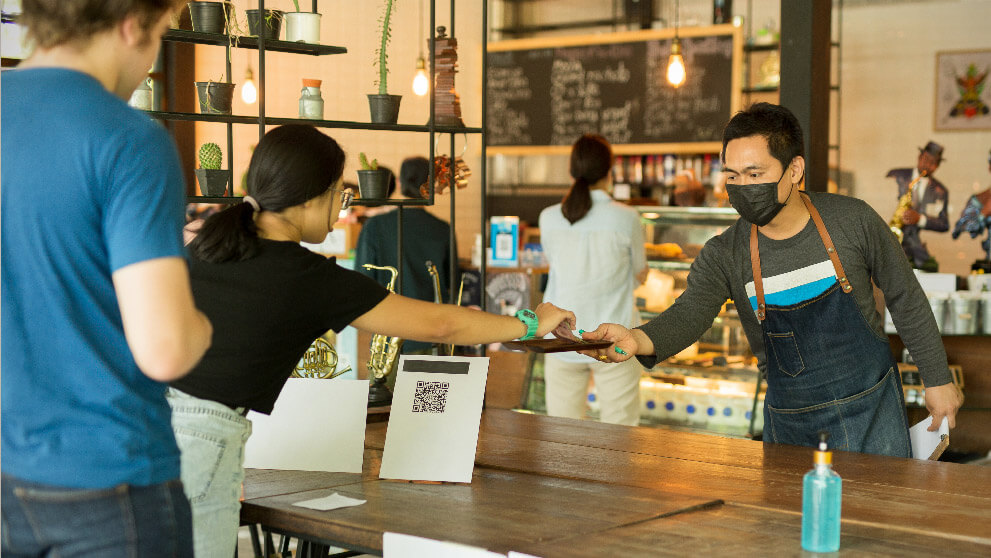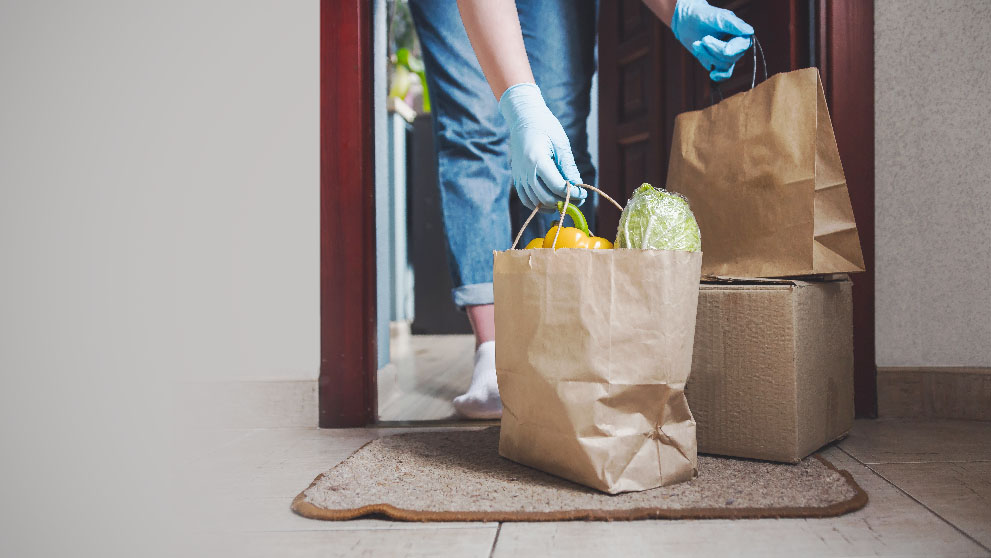In last week’s article, we looked at the immediate changes in consumers’ buying behaviors in response to the pandemic – most notably, panic buying and the switch to online shopping. This week, we’ll look at what trending products are a priority now – the ‘new essentials’ – and why the experience brands offer online is more important than ever.

This article will cover:
Consumers' changing behaviors online: what they’re buying, what they’re not, and their desire for digital experiences whilst stuck indoors.
Consumers' changing behaviors online: what they’re buying, what they’re not, and their desire for digital experiences whilst stuck indoors.
With the world in lockdown, it’s unsurprising that e-commerce is experiencing a period of rapid growth, attracting many new customers. Online buying may be second nature to millennials, but the pandemic has given older generations a sharp nudge towards the sector for the first time. In China, between January and February of this year, e-commerce use amongst those aged over 45 rose by 27%.1
E-commerce not only offers consumers convenience, but also an easy way to shop around for the best prices – particularly valued during this period of financial uncertainty. However, cautious spenders don’t mean unadventurous spenders: 50% of people say they’re trying new products and services for the first time2, with the bottleneck in major retailers’ supply chains prompting consumers to try alternative brands.
Trending products in COVID-19
As the initial panic buying subsides and we begin to adapt to the ‘new normal’, what are consumers focusing on now?
Beyond satisfying immediate necessities for food, the ‘new essentials’ are influenced by our current daily living situations, with aspirations turning inwards to focus on self-care and the home: ACI reports a 97% increase in online sales of home products and furnishings compared to 20193, and Sephora has seen a 30% increase in online beauty sales compared to the same period last year.4 Even the widely mocked Crocs are having their moment to shine with an increase in e-commerce sales of 14% in the first quarter of 20205, as consumers seek comfort over luxury.
With restaurants closed, a whole new generation of amateur chefs are donning their aprons to cook meals at home, making the recipe box sector one of the few winners in the crisis. UK-based Mindful Chef, which sells meal kits, has reported a 452% rise in customer numbers since the end of March6. Likewise, in the US, Blue Apron saw a 7% increase to 376,000 customers over the previous quarter7.
The demand for fitness equipment has increased too, as many people switch to home workouts amidst the lockdown. In China, JD.com has reported soaring sales of fitness machines8, whilst New York-based Peloton reported a 66% increase in sales of its high tech at-home workout equipment in the most recent quarter9 – welcome news for the previously troubled unicorn.
As businesses face the pressure to digitize rapidly, it’s worth noting not just what e-commerce customers are buying, but how they behave online. Many brands fall into the trap of treating e-commerce as just another channel, a secondary extension to their bricks and mortar stores, when in fact the platform has a substantial influence on buyers’ behaviors. Impulse purchasing seen in-store is replaced with more considered spending online, as users have time to browse and compare products before committing to buy. In this competitive space, engagement will win – now is the time to recognize digital as ‘theater’ and treat it as an opportunity to tell more of your brand story.
When Chinese jeweler Ideal was forced to close its stores during the pandemic, it pivoted its retail model into a digital one almost overnight. It established ‘online virtual stores’ through live streaming, with its sales associates becoming the hosts of the broadcasts. The move allowed customers to still gain the information they required before committing to a high-value purchase.
“The best time for innovation is in times of crisis.” - Dr Martina Olbertova, founder and CEO of Meaning Global10
The pandemic has forced many brands to adapt and think creatively to still give customers an ‘experience’ online. From gym chains offering online classes to beer brands opening ‘virtual bars’, online is an important channel for maintaining a relationship with customers during lockdown.
The future
Whilst there is a great deal of focus on current e-commerce trends, the question on the lips of every brand is (or should be); what will happen to consumers’ shopping habits in the longer term?
“This type of experience creates a form of psychological trauma that changes mindsets and encourages reprioritization of goals.” - Dr. Pamela Rutledge, director of the Media Psychology Research Center11
With the world experiencing a crisis on an unprecedented level, and the global economy on the edge of recession, people are being forced to rethink their aspirations. Consumers are changing what they put value on, with status flaunting and celebrity culture facing a backlash.
Boston Consulting Group12 has forecast that the luxury goods sector will suffer a decline in sales of between $85 and $120 billion in 2020, although there is some optimism for recovery for the sector in China, which accounts for 35% of the global personal luxury market.
Michael Baer, managing director of U.S. based Ipsos Affluent Intelligence, believes the pattern of slow global recovery in the luxury goods sector seen after the 2008 recession is a good indicator of what will happen this time: “The key takeaway is to recognize that consumers are going through anxiety – which will, in turn, lead to behavioral shifts – and this won’t likely snap back to pre-crisis norms post-crisis.”13 Instead, ‘health is the new wealth’, as shown by the previously mentioned boom in self-care and fitness products.
As we continue to adjust to the crisis, it remains to be seen which of the new consumer behaviors will remain in the long term – it is, however, important to know how to adapt and manage customer expectations in times of change.
Coca-Cola is one company already preparing for post-pandemic life, building a new brand strategy based on the belief that the uplift in e-commerce will remain. CEO James Quincey explains: “We are investing in digital capabilities to strengthen consumer connections and are further piloting several different digitally-enabled initiatives using fulfillment methods […] to capture online demand for at-home consumption in the future.”14 The beverage giant is also expecting to see a renewed focus on known and trusted brands as a result of consumers spending less time in stores browsing the shelves. In response, it is taking a ruthless approach to its innovation pipeline, killing projects that aren’t performing as well as expected and focusing on fewer, more scalable solutions.
Much of the retail industry’s rate of ‘bounce back’ will depend on factors that cannot be predicted, most notably, the duration of the pandemic. What is certain is that those brands that are optimized to get in front of consumers’ behavior changes will win new customers and earn their loyalty. If you want to find out how DHL can help you do that, get in touch today.
Next week, in the final of our three-part series on Pandemic Culture, we will be taking a detailed look at what e-commerce brands should be doing to prepare for post-pandemic life in the longer term, to both survive and thrive.
1 – McKinsey & Company, 2020
2 – PwC, 2020
3 – ACI, April 2020
4 – Sephora, Glossy, May 2020
5 – Crocs, Quartz, April 2020
6 – Mindful Chef, Financial Times, May 2020
7 – Blue Apron, Financial Times, May 2020
8 – JD.com, April 2020
9 – Peloton, Business Insider, May 2020
10 – Dr Martina Olbertova, Canvas8, May 2020
11 – Dr Pamela Rutledge, Canvas8, May 2020
12 – Boston Consulting Group, Vogue Business, March 2020
13 – Michael Baer, Ipsos, March 2020
14 – James Quincey, Beverage Daily, April 2020







